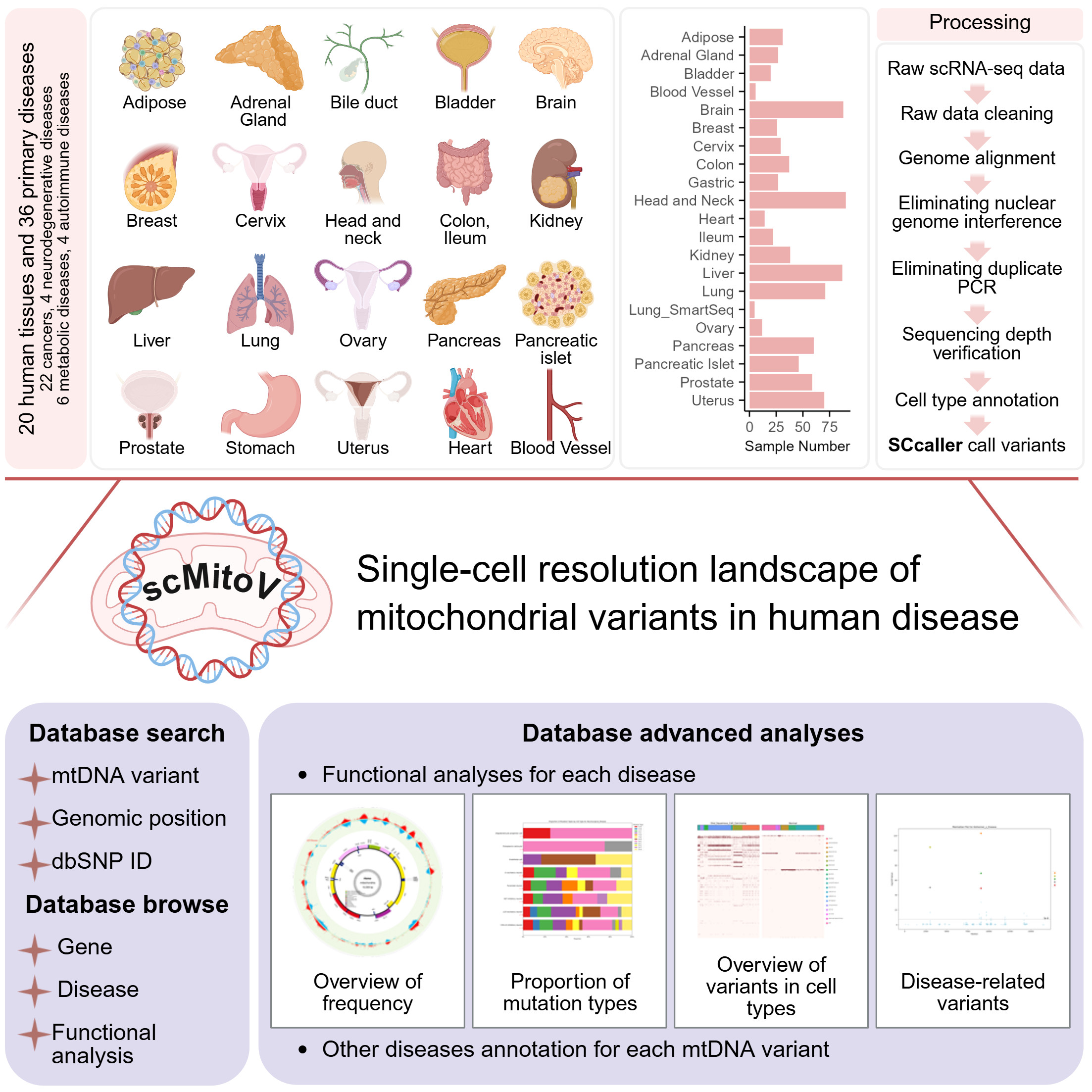
|
Home |
Download |
Statistics |
Landscape |
Help |
Contact |
About scMitoV
 Search
Search|
E.g. SNP: MT9055G>A, MT2617a>T|C|G; |
|
|
Please enter a number or a range between 1 and 16569. |
|
|
E.g. rs193303045 |
 Browse by gene
Browse by geneEach entry has an annotation for the gene, as well as two tables that list the variants of the gene in different cell types and diseases. Only variants present in at least 5 cells of at least one cell type for at least one disease are shown.
| • Protein-coding gene | ||||||
MT-ND1 |
MT-ND2 |
MT-ND3 |
MT-ND4L |
MT-ND4 |
MT-ND5 |
MT-ND6 |
MT-CYB |
MT-CO1 |
MT-CO2 |
MT-CO3 |
MT-ATP6 |
MT-ATP8 |
|
| • tRNA-coding gene | ||||||
MT-TA |
MT-TR |
MT-TN |
MT-TD |
MT-TC |
MT-TE |
MT-TQ |
MT-TG |
MT-TH |
MT-TI |
MT-TL1 |
MT-TL2 |
MT-TK |
MT-TM |
MT-TF |
MT-TP |
MT-TS1 |
MT-TS2 |
MT-TT |
MT-TW |
MT-TY |
MT-TV |
||||||
| • rRNA-coding gene | ||||||
MT-RNR1 |
MT-RNR2 |
|||||
 Browse by disease
Browse by diseaseEach entry shows the results of the variant analysis for each disease.
 Browse by functional analysis
Browse by functional analysisEach entry shows results for all diseases in each category. Only the "Mitochondrial variants that have been studied in association with other diseases" module shows tables of variants and associated other diseases.

